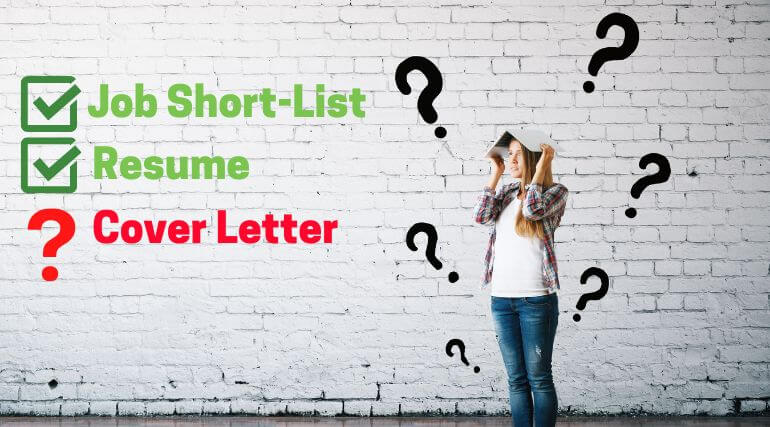Your All-In-One Guide For Writing A Cover Letter
You've been looking for a job for weeks, and you're nearly there! Your résumé is now at its best. You've narrowed down your selection of amazing jobs to apply for. Even a pal prepped you for each and every interview question there is. Before you can submit your application and move on, you realize that the job posting calls for a cover letter.
Now that you must figure out how to create a cover letter...
Not to worry! We have your back. Contrary to popular belief, creating a cover letter is rather straightforward. We'll show you how to create a cover letter in this article so you can land the job you want.
What is a cover letter?
For use in conjunction with your resume and other application materials, a cover letter is a succinct (one page or less) letter that you send to a hiring manager or recruiter. When written correctly, a cover letter offers you the opportunity to discuss how your qualifications match the requirements of the position you're applying for. Additionally, it allows you to make a suggestion to the reviewer that you're pleasant, creative, and probably a fantastic addition to the team.
Are the cover letter and resume the same?
The objective of your resume is to present the information, however, the goal of your cover letter is to show more personality. Most job seekers blabber on and on about what they want, throw out cliche-filled paragraphs that effectively simply repeat their résumé, or go off on some bizarre tangent in an effort to stand out instead of strategically employing cover letters.
Writing a cover letter that leaves an excellent first impression on potential employers will increase your chances of landing an interview. You may also use internet tools to create a cover letter if you don't have the time to compose one.
While cover letters aren't always needed when applying for jobs, many employers do so to assess your abilities, interests, and work history. Imagine the advantage you'll have if you learn how to write cover letters properly given these facts.
How a cover letter is written
The purpose of the cover letter is to provide a positive first impression since it introduces you to the potential employer.
This necessitates creating a separate cover letter for each job that you apply for. No templates. No prewritten crap. Additionally, the structure of your cover letter should be appropriate for the business and field to which you are applying.
Your cover letter should be aesthetically ordered and have an orderly presentation of the content even if there is no "formal format" for it or the information you put in it.
Don't reiterate your resume. Your phrases should convey more than just the key points from your CV. In a way that differs from your resume, you should sell yourself, outline your goals, and demonstrate your enthusiasm for the new position and organization in your cover letter.
Check out this succinct list of key duties for a focused cover letter:
- A cover letter carefully links your qualifications and experience to the job description and other requirements.
- It justifies your desire for the position in question.
- Commenting on the organization's mission or key leadership demonstrates your knowledge of the business.
- It ends with a call to action that asks the recruiting manager to contact you to follow up on the employment opportunity.
Tips and tricks to ace your cover letter
Sometimes the little things may make a huge impact when you need to create a cover letter to apply for a job. The better your letter is written, the more likely it is to impress the hiring manager.
You'll have a better chance of landing an interview if you use these strategies for writing a top-notch cover letter.
- A strong "hook" will pique the hiring manager's interest and provide some information about your suitability for the position and business.
- If necessary, conduct some research to discover the recruiting manager's name and address your letter to them.
- The hiring manager is more likely to reread your application if you make an effort to make your personality come out in your cover letter.
- Although templates and samples are helpful, be sure to modify any letter model to match your talents and abilities as well as the position you are looking for.
- If you're unsure of who will be reading the letter, start the salutation with "Dear Hiring Manager."
Another expert suggestion is to make sure someone else reads your cover letter. You could believe your work is flawless, but a buddy will almost always see a few errors and point out instances when your language is a little awkward.
What ‘don’ts’ should you keep a note of while writing your cover letter?
No Oversharing – Remain professional and refrain from going overboard when expressing your personality. Avoid tangential information and leave out personal information that is unrelated to your capacity to perform the job.
Don't overdo the self-promotion – Employers anticipate job applicants using the cover letter to highlight their accomplishments. (Isn't that what it's all about?) Job seekers should provide specific information that communicates value and impact rather than boasting about being the "world's best UX designer" or a "marketing superhero." Bold assertions are OK as long as you support them with data.
No demand making – Focus on what you can accomplish for the employer rather than what you want in return. To mention wage requirements before you've even secured a phone or video interview is arrogant and unattractive. The same holds true for mentioning the extras and benefits you desire.
Don't disregard the instructions – Employers frequently provide detailed instructions in the job posting, such as sending your cover letter and CV in a certain file type or mentioning the position title or requisition number. Reread the job description to make sure you've followed all of the instructions so that you don't raise any red flags before you submit your letter or press the send button.












